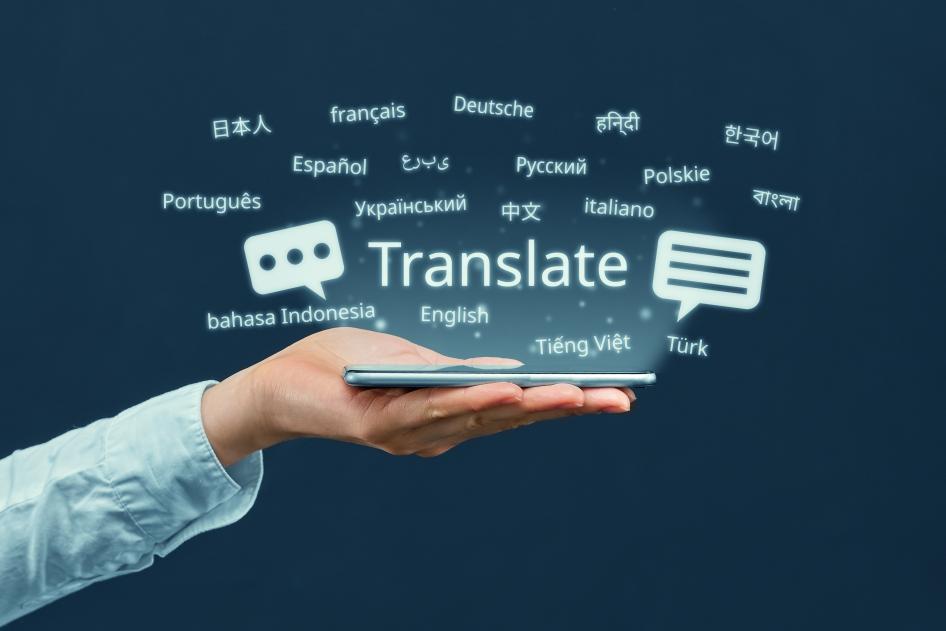eLearning Translation: Creating Linguistically Inclusive eLearning

As we see more and more companies prioritize accessibility in their eLearning, we must remember that the heart of accessibility is inclusivity – and our commitment to accessibility should also extend to meeting the needs of a linguistically diverse audience. If we have learners in our audience whose native languages are not English, we must ensure that we have content accurately translated and localized so they have the same learning experience.
A lot of time and effort goes into creating an online course, and the task of translating it can often feel daunting. So, where do you begin? We met with our colleagues at Interpro Translation Solutions to gather best practices and insights into the eLearning translation process.
eLearning Localization 101
First, let’s level set on what it means to localize an eLearning program. Localizing involves adapting the training content and elements to suit the linguistic, cultural, and regional preferences of the target audience.
Key aspects of eLearning localization include:
- Translation: Converting the text and multimedia content into the target language. This includes translating on-screen text, narration scripts, subtitles, and any written materials.
- Cultural Adaptation: Adjusting the content to align with the cultural norms, values, and expectations of the target audience. This may involve modifying examples, scenarios, and references to ensure cultural sensitivity and resonance.
- Multimedia Localization: Adapting multimedia elements, such as graphics, images, and videos, to be culturally appropriate and recognizable to the target audience. This may also include voiceover with professional native speaking talents.
- Technical Compatibility: Ensuring that the eLearning program functions seamlessly within the specified Learning Management Systems (LMS), devices, and internet speeds.
- User Interface (UI) Localization: Adapting the user interface elements, such as buttons, menus, and navigation, to the language and design conventions of the target audience.
- Native-Speaker Review: Languages are preferential. Seeking feedback from native speakers or subject matter experts in the target region during the workflow will help identify and address any cultural or linguistic nuances that may have been overlooked. This also could involve establishing a style guide or glossary of terms as the first part of the translation process.
Design with the Intent to Translate
As we can see, localizing eLearning is comprehensive. It should be. We’re seeking to create a training experience that is inclusive and meaningful to all the target audiences we are reaching.
When you conduct your upfront audience analysis, identify early-on if you feel translation of the content is needed. This will allow you to write and design the first iteration of your course with the intent to translate and localize it top of mind.
Here are a few best practices to keep in mind as you write and design your course to help translation go smooth later:
- Ensure the course activities are culturally appropriate
- Do not use colloquialisms
- Keep text on each screen to a minimum. This reduces the potential need to add screens as the text grows, which it does with most languages. Your character count will not be a 1:1 in the translated language.
- Discuss a style guide with your primary stakeholder. It should include answers to questions about industry term translations and acronyms. For instance, do words like Six Sigma get translated and how do we handle acronyms like LEAN.
- Try not to use text in images or graphics. This reduces the translation cost, as the graphics themselves will not need to be revised during translation
- Research if you need to adhere to local laws, regulations, and compliance requirements related to education and online content to ensure compliance
Partner with an eLearning vendor to support you end-to-end through the translation process
The Translation Process
Now, let’s walk through the translation process so you can see all these pieces come together.
- Hand-off Assets: Once the English version of your course is complete and you’re ready to localize it, gather and organize your source assets for a seamless handoff to your eLearning partner supporting with the translation. These assets may include:
- Storyboards (if available) and eLearning source files (Storyline .story file, access to a copy of an Articulate Rise module, etc.)
- Design files containing any custom-made graphics with text (if available)
- Videos used in the course, ideally with access to the video source project files
- Identify Reviewers: Your eLearning partner should have a native speaking reviewer already participating in the project from their team, but you’ll want your own reviewer, as well. This can be someone from your team (if you’re serving an internal training department) or from your client’s team (if you are a training vendor). This reviewer is your representative for the target audience for the course.
- Prepare Files (Translation Vendor): Translatable text and assets are identified from the assets provided and extracted for translation.
- Translate the Course (Translation Vendor): Now, the eLearning localization magic happens. Your translation vendor professionally translates, revises, and proofreads the materials with native speaking linguists in-country and paired by subject matter.
- Voiceover Recording (Translation Vendor): Any voice over recording or multimedia localization takes place once translations are approved by the identified reviewers (if reviewed).
- eLearning engineering (Translation Vendor): The localized course is engineered in the authoring platform, taking into consideration text expansion and audio to text syncing.
- Module Validation (Translation Vendor): A final and super important step is to provide a validation of the localized course with a native speaker. This entails viewing the course in the target language side-by-side with the English version. Any final changes are implemented then the course is published and delivered.
In Summary
If you know you have to deliver training to a linguistically diverse audience, it's crucial to design courses with translation in mind from the outset. By following best practices such as ensuring cultural appropriateness, avoiding colloquialisms, and minimizing text on screens, the translation process can be smoother and more cost-effective. Establishing a style guide and partnering with experienced eLearning vendors can also streamline the localization process.
By prioritizing translation in our eLearning content creation process, we not only enhance accessibility but also foster a more inclusive learning environment where every learner, regardless of their language or cultural background, can thrive.
Related Article:
A Crash Course in eLearning Translation: Introduction and Benefits
Interpro Translation Solutions
About Interpro Translation Services:
Interpro Translation Solutions has assisted organizations by providing quality foreign language translation and interpretation services since 1995. Interpro is proud to offer turnkey translation services of any content into any language from any file format. Interpro has proven its dedication to providing quality translation services by earning two ISO Certifications; Translation Services (ISO 17100:2015) and Quality Management System (ISO 9001:2015). Interpro takes a proactive and transparent approach to business, offering solutions in various applications including, but not limited, to: Storyline 360, Vyond, Captivate, Lectora, Rise 360, and Adobe Creative Suite.

By Angeline Evans, Client Solutions Consultant
About Us
d'Vinci Interactive is an award-winning comprehensive learning solutions provider for corporate, government, medical, non-profit, and K-12 target markets.
Ready to Connect?
Contact us today to start the conversation. We work with you to find innovative solutions that drive a sense of shared accomplishment and trust.